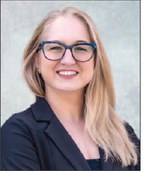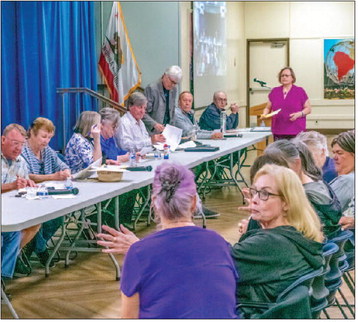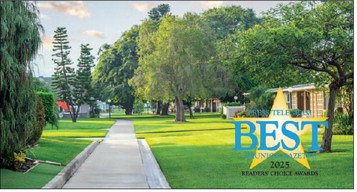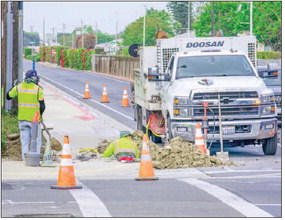pany envisioned would contain all ….
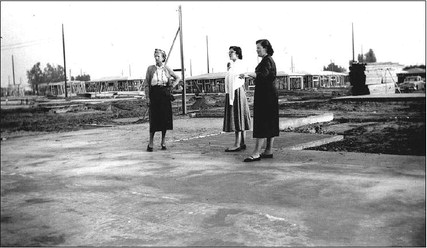

pany envisioned would contain all the services of a town for its projected 10,000 residents (10). However, Ross Cortese’s concept of a “comprehensive” development was thwarted when the hospital he wished to build for Rossmoor’s population was repeatedly denied. (11) Nonetheless, the couple’s study of medical services drew their attention to the health and housing needs of older adults, whose numbers were growing rapidly in the post-war period. The Corteses’ interest culminated in the couple’s $4 million gift (12) founding what became the University of Southern California’s gerontology school, now the world’s largest academic program researching older adults (13). Alona Cortese later endowed The Alona Cortese Elder Law Center at the Chapman University School of Law, which provides pro bono legal representation for seniors. (14) This interest influenced many of the Corteses’ future business enterprises. In 1961, upon finishing the Rossmoor housing development bordering Los Alamitos, California, Ross Cortese said the housing needs of seniors “have not been met even half-way thus far. None has answered the attendant economic, medical and sociological needs of the majority of our senior citizens.” (15) While Arizona’s Youngtown and Sun City senior living developments had already established the concept of dedicated retirement communities (16), the Corteses contemplated a new model for senior housing: a comprehensive cooperative development in which the residents owned not their residential unit, but a share of stock that permitted them to live in the community and own the rights to all the development’s common amenities. The community’s managers, not individual residents, would be responsible for their homes’ maintenance, painting and plumbing, appliances, and landscaping. It would be “not stuck out in the desert,” but near a city so residents could continue to enjoy a city’s cultural opportunities and frequent visits from families and old friends. (9) Emulating the company’s “Walled City of Rossmoor” experience, the community would be the United States’ first and largest gate-controlled, walled retirement community. One of the most important amenities was a plan offering free on-site medical care and prescriptions as part of the monthly resident’s fees, again a first in a U.S. retirement community (17).
Rossmoor Leisure World (as it was initially named) was to be built on a portion of the Hellman Ranch in what was then an unincorporated square-mile plot in Orange County. Nearly adjacent to the walled Rossmoor development, the $150 million project ($1.3 billion in 2021 dollars) (16) (18) would be the United States’ largest cooperative housing development and its first all-electric community (19).
However, the project’s scope and its “untried” cooperative ownership scheme generated skepticism among potential lenders. The Metropolitan Life Insurance Co. eventually agreed to finance the project (10), but stipulated the Federal Housing Administration (FHA) guarantee the loan (11).
FHA authorities agreed, but established “very strict regulations.” Rossmoor could provide the land and the plans, but “could have no part in building, sales or management.” Instead, the FHA required that separate not-for-profit corporations share the project’s ownership. One, the Leisure World Foundation, would supervise the project’s construction and marketing. When residents began to move in, there would be elections from among the residents to serve on the Golden Rain Foundation (GRF) as trustees for all the development’s common facilities and to provide community-wide services such as recreation and security. Finally, as each of the parcels comprising the development were populated, the 6,470 planned residential units (9) and the land on which they would be built would be controlled by “mutuals,” a third level of nonprofit corporation collectively owned and managed by a board elected by residents of each of the development’s parcels (11).
Notwithstanding the awkward governing arrangement, construction of the Seal Beach Leisure World began in mid-1961. (20) Interest rose quickly, propelled by a national marketing campaign that included a 1962 Life magazine advertisement claiming the development was “the most revolutionary new concept in housing since World War II.” (21) The Life advertisement was part of what is thought to be the first national mass-marketing campaign for a housing project. (11) Hill and Knowlton, then the world’s largest public relations firm, obtained widespread newspaper, radio and television coverage that by mid-1963 let the community claim residents from 43 states and 11 countries. (22) The Corteses’ Los Angelesbased advertising firm, Brangham Brewer, spent so much money marketing the development that Leisure World’s 1963 ad budget was announced in a free-standing Advertising Age magazine item. (23) Leisure World’s prominence soon allowed the Corteses to assemble a Leisure World Foundation board headed by William G. Simon, the former head of the FBI’s Los Angeles field office and a founding director of The J. Edgar Hoover Foundation (24); and executive vice president Kenneth E. BeLiue, the former undersecretary of both the U.S. Navy and the U.S. Army. The other seven trustees included Los Angeles Dodgers owner Walter F. O’Malley; Hollywood producer Mervyn LeRoy; Paramount Pictures vice president Y. Frank Freeman; Sylvester Smith Jr., a past president of the American Bar Association; and former U.S. Rep. Allan O. Hunter. (10) While the development would include the usual retirement amenities—a golf course, swimming pool, clubhouses and shuffleboard courts—the Seal Beach construction incorporated insights the Corteses had gained through their “desire for data about older adults.” (13) Stairs, steps and curbs would be replaced by ramps. Countertops and wide doors simplified wheelchair access. Showers had built-in seats to avoid slipping accidents (17). An on-site medical center and pharmacy would provide free access to doctors, diagnostic services, physical therapy and medication to all residents. (25) Every mutual would include large greenbelts, and centralized parking structures would preserve the residential units’ parklike setting and encourage walking and physical activity.
On Oct. 29, 1961, about four months after construction began, the first model units, called “manors,” went on public display. (26) By day’s end, 10,000 people had thronged the grounds and approximately 550 of the 844 units offered had been sold. (27) By March 1963, the administration estimated 300,000 people had toured the grounds and the model homes. (28) The development’s sub-800square-foot units (29) drew surprisingly prosperous buyers. Even though most residents no longer worked, their annual per-capita income in 1963 was $6,000 (30), 180% higher than the national average. (31) On June 8, 1962, a single year after construction began, the first residents moved in (32) and within five months there were over 3,000 residents. (16) Over 10% of the first 4,500 units were purchased via mail transactions, many without the buyers ever having seen Leisure World. (28) All the original units were sold by late 1964 (33).
Next week: Leisure World’s Medical Care and LW Services; Jan. 20: In the News, Demographics, Attractions, In Popular Culture, Recognition and Notable People. Like to know more? Professor Thompson’s sources appear below.
Works Cited:
1. Peterson, Robert. Largest Housing Project for Seniors. The Hanford Sentinel. October 2, 1961, p. 12. 2. Destination for the Ageless Generation. LeisureWorld.com. [Online] 2019. [Cited: December 4, 2021.] https://leisureworld.com/ home/. 3. Alona Cortese, 97; Co-Developer of Leisure World. Orange County Register. April 23, 2006.
4. Alona Marlowe. imdb.com. [Online] [Cited: March 2, 2021.] https://www.imdb.com/name/ nm0549255/. 5. California Secretary of State. Corporate Search Results. Sacramento, California : s.n. Dr. Shirley N. Weber. 6. Strawther, Larry. A Brief History of Los Alamitos and Rossmoor. Charleston : The History Press, 2012. pp. 130-131. ISBN 1609498615. 7. Hidden Communities: Mid-Century Modern Homes in Orange County. OC’s Mid-Century Modern Real Estate. [Online] June 2, 2014. [Cited: June 4, 2021.] http:// www.ocmodhomes.com/hiddencommunities- mid-century-modern- homes-orange-county/.
8. Big Crowds See Frematic Homes. Independent-Press-Telegram. September 25, 1955, p. C6.
9. Rossmoor Leisure World. Rossmoor Corporation, 1963.
10. Dorsey, John. A New Life. Rossmoor Corporation, 1965.
11. Baker, Terry. The History of Leisure World 1963-1975. The Historian. [Online] July-August 2009. [Cited: February 18, 2019.] http:// lagunawoodshistory.org/wp-content/ uploads/2016/02/2009_07_ Journal.pdf. 12. USC, Edison Both Honor Ross Cortese. Independent-Press-Dispatch. March 14, 1965, p. R7.
13. Belman, Orli. USC Leonard Davis School Honors the Legacy of Ross Cortese. USC Leonard School of Gerontology. [Online] March 29, 2018. https://gero.usc. edu/ 2018/ 03/ 29/ usc- leonarddavis- school-honors-the-legacyof- ross-cortese/.
14. Alona Cortese Elder Law Center. chapman.edu. [Online] [Cited: February 27, 2021.] https:// www. chapman. edu/ law/ legalclinics/ elder-law.aspx.
15. Sellout of Community Tribute to Developer. Los Angeles Times. May 7, 1961, p. C14. 16. Strawther, Larry. Seal Beach: A Brief History. Charleston: The History Press, 2014. pp. 166-170. ISBN 978.1.62619.489.2. 17. Elderly Housing Calls for Non-Profit Medicare. Santa Rosa (CA) Press Democrat. March 21, 1962, p. 33. 18. Census Bureau. US Inflation Calculator. Bureau of Labor Statistics. [Online] [Cited: February 25, 2021.] https://www.bls.gov/data/ inflation_calculator.htm. 19. Aron, Doris. Rossmoor Liquidates: Grand Finale for a Bravura Performance. The Washington Post. May 30, 1981. 20. Building Permits Up in Seal Beach. Independent. July 6, 1961, p. B6. 21. Kopetman, Roberta. Leisure World celebrates 50th today. The Orange County Register. June 23, 2012. 22. World Responds to World of Leisure. Herald-Examiner. June 16, 1963. 23. Rossmoor Leisure World Sets ‘63 Ad Budget. Advertising
CITATIONS, page 20
Friends viewing Mutual 1 from slab 68-A months before its first residents arrived.
LW's clubs were a big draw to 1960s retirees. This Trike and Bike Club photo appeared in a 1963 Life magazine article.


